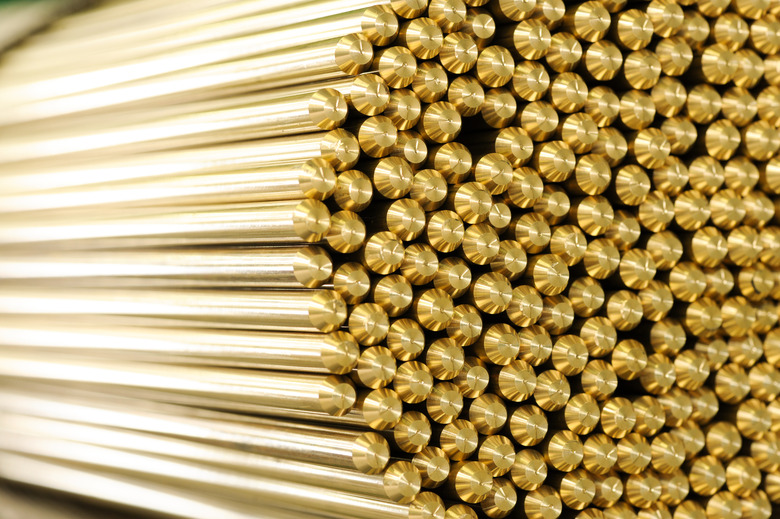How To Temper Brass Metal
Brass is composed of 65 to 85 percent copper and 15 to 35 percent zinc. Like many metals, brass hardens when worked, such as by bending, hammering or otherwise shaping it, which makes it difficult to work and shape further. At the atomic level, hardening results from dislocations between layers of atoms. If a metalsmith heats brass to the point where the atoms possess sufficient energy to rearrange themselves back into well-ordered layers, and then rapidly cools the metal — a process called tempering — the metal returns to its softer, more pliable state.
Step 1
Place the brass object in an oven or kiln and set the temperature to 565 degrees Celsius or 1050 Fahrenheit. Leave the object in the oven for at least 2 hours.
Step 2
Put on a pair of heat-resistant gloves and use a set of long tongs to remove the object from the oven and place it on a fire brick or aluminum block for approximately 3 minutes.
Step 3
Fill a large bucket with water, then grasp the object again with tongs and quickly submerge it in the water. After 8 or 10 seconds, remove the object from the bucket. The object should now be cool to the touch and tempered.
Things Needed
- Oven or kiln capable of 565 degrees Celsius or 1050 Fahrenheit
- Long tongs
- Heat-resistant gloves
- Fire brick or block of aluminum
- Large bucket
Warning
Placing the hot brass object in water may result in the rapid generation of steam. The use of gloves and protective eyewear during this step is strongly recommended.
Cite This Article
MLA
Brubaker, Jack. "How To Temper Brass Metal" sciencing.com, https://www.sciencing.com/temper-brass-metal-7937058/. 15 February 2011.
APA
Brubaker, Jack. (2011, February 15). How To Temper Brass Metal. sciencing.com. Retrieved from https://www.sciencing.com/temper-brass-metal-7937058/
Chicago
Brubaker, Jack. How To Temper Brass Metal last modified March 24, 2022. https://www.sciencing.com/temper-brass-metal-7937058/
